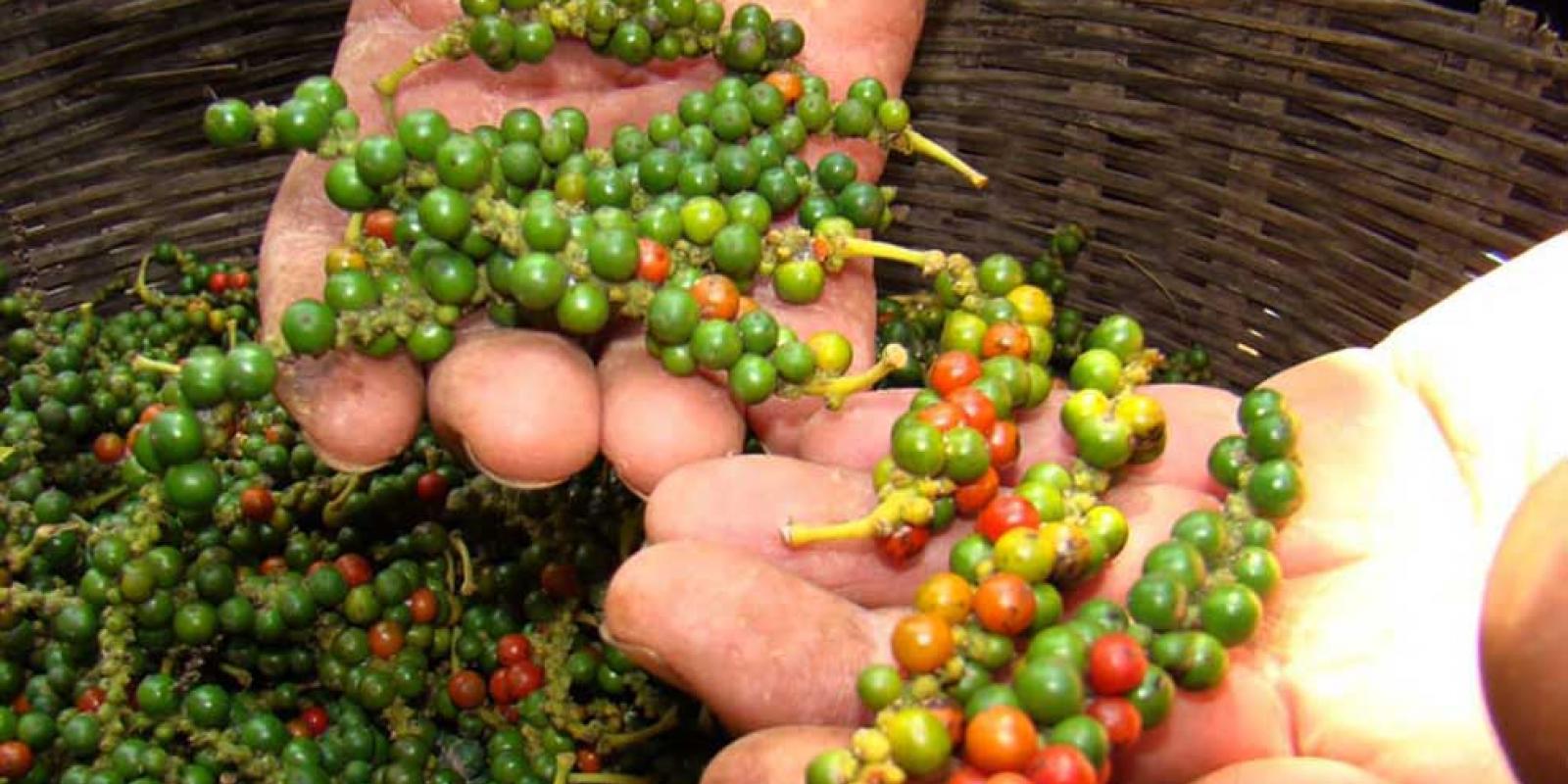Kampot pepper is a type of pepper mostly grown in the mountain papers of Southwestern Cambodia in the Kep and Kampot provinces. This pepper is grown in this region because of various factors that enable it to do better.
Kampot pepper’s history dates back to the Angkor Empire of the ancient civilizations. Pepper production increased in this area in the french colonial era early 20th century, but this reduced when farmers opted to grow rice. This changed when Cambodia regained peace, and farmers were able to get back to pepper farming. Being the most famous world’s best pepper, any serious gourmet will always express their enthusiasm for Kampot peppercorns. For centuries, Cambodian cooks, spice fans, and French culinary elites have widely used the Kampot pepper.
History of Peppercorns in Cambodia
Peppercorns (black pepper) are a pepper native to southern India and have existed since 2000 BC, but no record in history shows when pepper cultivation commenced in Cambodia. The first Cambodian pepper can be traced back to the 13th century when Zhou Dougan, a Chinese diplomat, noted the growth of pepper around ancient Angkor city. The Indonesian and French traders played bigger roles in Cambodia’s pepper history. The culinary authority and France’s Cambodian colonies popularized the cultivar of the Cambodian pepper during the 20th century.
Why is Kampot pepper special?
Kampot lies in the Damrei Mountains foothills, where the quartz-rich soil, warm, humid weather, and elevation create good pepper farming conditions. The Peppercorn Vines do well in this environment, yielding a spice of superior aroma and flavor. These peppers are considered the finest peppers in the world, named after their region of production.
This pepper was the first Cambodian product to receive the French appellation, a geographical indication to protect special food products’ trade names. Out of the geographical indication status in 2016, the farmer’s protection status ensures that farmers receive pepper and that the quality is held to a high standard.
There are three types of Kampot peppercorns, red, black, and white. The red Kampot peppercorns are unique and special because there are only a few berries that turn blush red upon maturity. At this stage, the peppers are fruity and have a sweet flavor. The perfectly ripe berries are separated from the rest by hand and dried in the sun.
The pepper produces a distinctive aroma with intoxicating hints of citrus peel fresh, eucalyptus and pine. The Black Kampot peppercorns embody delicious flavors though piney and noticeably earthier.
The white pepper is produced from Kampot pepper berries which are ripe. The preparation of this kind of pepper is unique as it is soaked in water for about ten days, resulting in fermentation. This is why it has a less complex flavor, always milder than black pepper.
Kampot pepper is a loved pepper by most Europeans, especially the French. The pepper is produced in the Kampot region in Cambodia though its origin is considered to be the southern papers of India. Most and most prominent world chefs prefer using the Kampot pepper. But what might be the reason behind this?
Kampot is a province located in southern Cambodia, the Gulf of Thailand in the South China Sea borders Phnom Bokor, and Kampot national park rises like a folding screen west of Kampot. The area’s dry season is always short and has good yearly precipitation. So the pepper becomes unique because Kampot soil harmonizes with the area’s humid tropical climate producing ideal conditions for quality Kampot pepper.
The pepper has become popular as farms representing the Kampot pepper run cafes and restaurants which use Kampot pepper for major cuisines. Moreover, the restaurants have cooking classes that teach how chefs can use pepper to make traditional Khmer cuisine. Kampot has produced pepper for a long time, but its fame boomed during its colonization by the French.
The French colonizers saw the value of the Kampot pepper’s taste and flavor. French consumers like the pepper and export eight thousand to France each year, leading to its popularity. This pepper has maintained its reputation because of its taste and flavor, making it the world’s finest.
The pepper is grown 100% organic, which makes it unique. The pepper can only be sold or exported under the trade name “Kampot pepper ‘after joining the (Kampot Pepper Promotion Association) KPPA, a combination of several local pepper producers. For the pepper to be allowed to use the name Kampot pepper, the pepper should go through quality screening, supervision, and verification.
The verification process is always strict and checks if farmers use chemical fertilizers before being granted certification marks through Geographical identification. The product’s certification marks and a guarantee of origin are Kampot. Some chefs and Kampot pepper enthusiasts associate Kampot pepper with wine because of the pepper’s long-lasting flavor and moderately spicy taste.
Cooking with Kampot Pepper
Just like a fine finishing salt, the Kampot pepper makes a sweet and luxurious condiment to a cuisine. Kampot pepper is a rare ingredient, so it is mostly reserved for recipes that can allow its qualities to stand out. The best recipes for this spice are Steak Au Poivre, Cacio Pepe, Cambodian Beef Salad, and Sauteed Crab.
The Kampot pepper is also perfect for sweet cuisines like dark chocolate, a scoop of vanilla ice cream, or freshly cut fruit. The black pepper spice is loved by almost every pepper enthusiast worldwide and goes well with almost all cuisine spices. If you need more Cambodian flavor, you can pair it with spices like star anise, lemongrass, tamarind, turmeric, and cardamom. You can make your own freshly cracked Kampot pepper, sliced scallions, kaffir lime juice, and fish sauce. Moreover, black pepper is a great condiment for almost all sea foods, especially grilled shrimp.
Conclusion
Kampot Pepper is a great culinary spice for its fascinating aroma and flavor. The Kampot pepper is mostly preferred by chefs and enthusiasts because of its unique taste from the great combination of soil, climate, and sea to produce a very nuanced, expensive, and aromatic pepper. The pepper has a unique flavor from all other peers, which makes it a unique spice.





